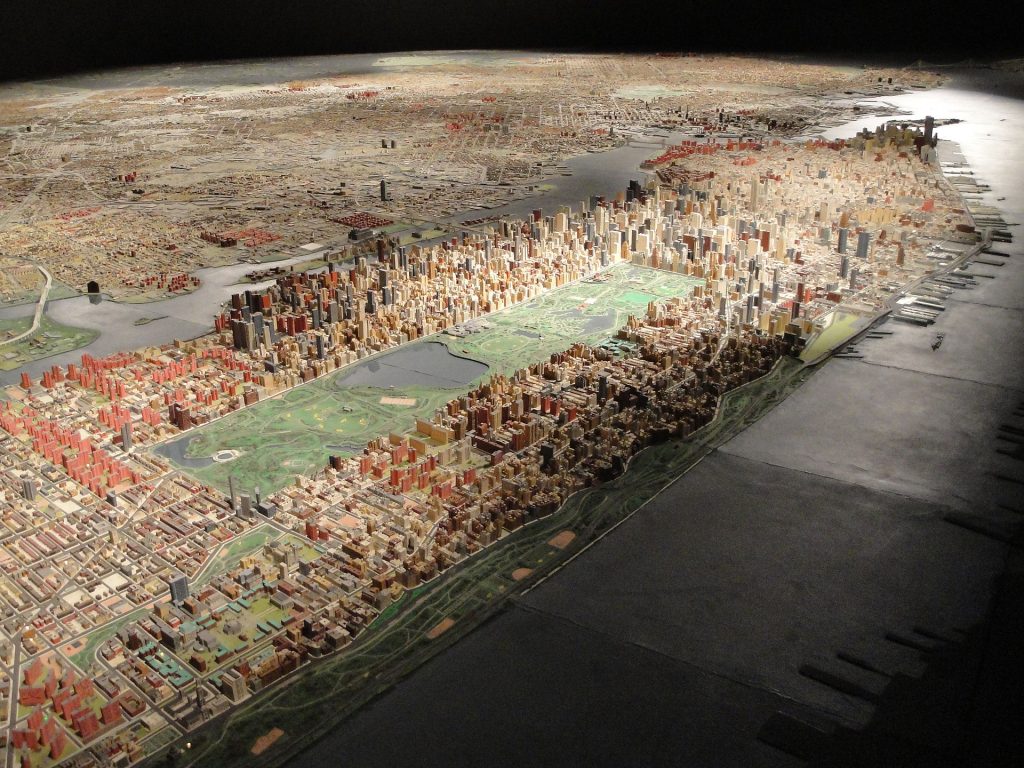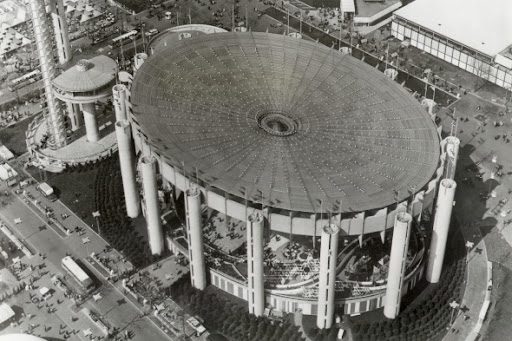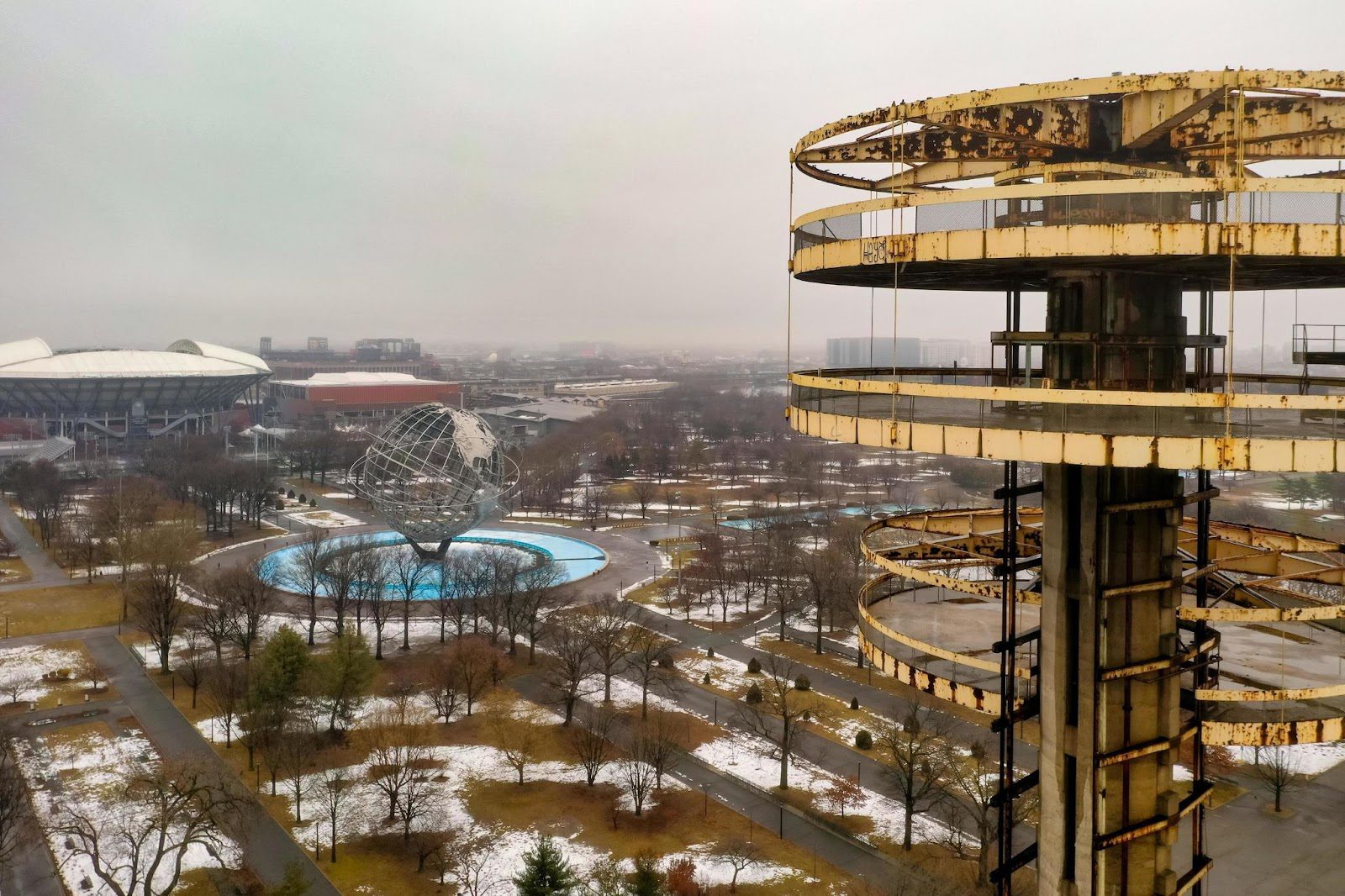The New York State Pavilion, constructed for the World’s Fair, is a landmark recognizable to nearly every resident of Queens due to its three towers that shape the borough’s skyline. Shortly after the fair, the pavilion was closed, and since then, the city has struggled to find a long-term use for this abandoned structure. However, this unique historical monument holds the potential to become a vibrant public space in the heart of the most diverse part of New York City. Read on to learn more about this architectural gem at queens-future.com.
The Tallest Structure of the Fair
The New York State Pavilion was built from concrete and steel specifically for the 1964 World’s Fair, which took place at Flushing Meadows–Corona Park. This international fair symbolized industrialization and served as an open platform for showcasing technical and technological advancements. The fair was held in Queens in both 1939 and 1964.
For the 1964 fair, several key structures were built in the park, including the steel Unisphere globe, the New York Hall of Science, the park terrace, botanical gardens, Shea Stadium, and the New York State Pavilion. The Pavilion occupied the largest area of the fairgrounds and featured a detailed panorama of New York—a giant model of the entire state depicting cities, towns, highways, roads, and stations.

During the fair, the Pavilion hosted concerts, discussions, and other events. The main level housed a restaurant, an art exhibition, and a New York Power Authority display. The mezzanine exhibited works from local museums, a rose garden, and various displays related to New York’s industry and culture. The three towers were used as observation decks, a grandstand, and a lounge for VIP guests. The highest tower housed an exhibition from the New York State Legislature. Meanwhile, Theaterama screened films and held art exhibitions related to the state.
Interestingly, the observation towers were not part of the original design. They were added at the request of Governor Rockefeller, who wanted the Pavilion to be the tallest structure at the fair. The observation platforms are not attached to the concrete columns, leaving a visible gap between the platforms and the columns. Each platform initially featured a colorful roof. Visitors reached the observation deck via two elevators in the tallest tower. The tent roof of the Pavilion was the largest suspended roof in the world at the time, and it was one of the few fair structures praised by architects.

Decline and Attempts at Restoration
After the fair concluded, discussions arose about whether the Pavilion should remain a permanent structure. Despite the desires of the community and local authorities, this became impossible due to the untreated creosote poles. Despite a contract that mandated the demolition of all fair buildings within 90 days of the event’s closure, the Pavilion remained because it was too expensive to demolish. For a few years after the fair, the building was used for music and art shows, and later as a roller-skating rink.
In the summer of 1974, the city closed the tent structure, citing the dangerous condition of the multicolored roof panels, which were removed in 1976. Over the next several decades, the city explored various options to preserve the Pavilion. A structural study of the observation towers revealed corrosion in the construction elements and secondary steel parts. Water leakage from the concrete columns worsened the situation.

The main issue with the roof structure was the corrosion of exposed steel, while the columns presented foundation challenges. However, a 2011 study determined that the concrete was still in good condition, and despite corrosion, the building remained viable for future use. While the city made several attempts to repair the structure, it stood abandoned for years, like many other derelict buildings in Queens.
Some positive changes occurred in April 2023 when the New York City Parks Department completed the first phase of stabilization work on the structure. Engineering firm Silman and architectural firm Jan Hird Pokorny Associates led the project, which was funded with $24 million from the state. The work included repairs to damaged concrete, the replacement of suspension cables, and the installation of new internal stairs in the three observation towers.
Appearance in Popular Culture
The New York State Pavilion has appeared in numerous films, music videos, and television shows. Notably, scenes from the science fiction comedy Men in Black and the superhero film Iron Man 2 were filmed there.
Since the early 1990s, skateboarders have also utilized the Pavilion’s ledges, steps, and grates in skateboarding videos. Artist Gary Simmons depicted the abandoned Pavilion in his mural Reflection of a Future Past (2009), which features blurred lines of the structure. Writer Christian Kellberg detailed the building’s history in his book The New York State Pavilion: An Enduring Landmark (2010), and other artists have referenced the structure in their work.


